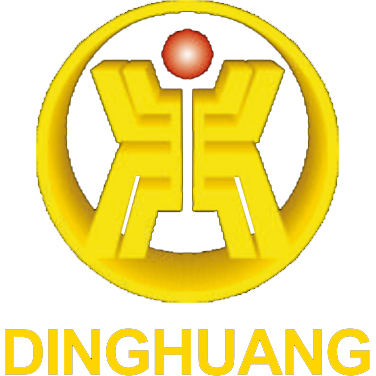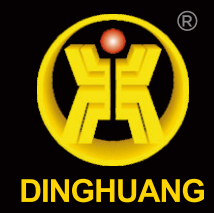Operating procedures for angle grinder
An angle grinder is a type of grinding tool used for cutting and polishing. Lightweight multi-purpose angle grinder, suitable for deburring and polishing.
An angle grinder is a type of grinding tool used for cutting and polishing. Lightweight multi-purpose angle grinder, suitable for deburring and polishing.
When operating an angle grinder, safety should always be the top priority. Before using the tool, ensure that you are wearing appropriate personal protective equipment (PPE), including safety goggles to protect your eyes from flying debris, gloves to safeguard your hands, and a dust mask to avoid inhaling harmful particles. It is also essential to secure your workpiece firmly to prevent movement during operation. Always inspect the grinder and the cutting or grinding disc for any signs of damage or wear before use; a damaged disc can shatter during operation, posing a serious risk.
To begin, hold the angle grinder firmly with both hands, maintaining a balanced stance. Position the tool at a comfortable angle to the workpiece, typically around 15 to 30 degrees, to maximize efficiency and control. When cutting or grinding, apply light pressure and let the tool do the work; excessive force can lead to uneven cuts and may damage the tool or the material being worked on. Additionally, be mindful of the sparks generated during the operation; keep flammable materials away from your workspace and ensure proper ventilation.
After completing your task, turn off the angle grinder and allow it to come to a complete stop before setting it down. Finally, clean up the work area and store the tool in a safe place, away from moisture and direct sunlight. By following these operating procedures, you can ensure not only the longevity of your angle grinder but also your safety while using this versatile tool.
Related Blogs
It has many uses and is commonly used by carpenters, bricklayers, and welders. Installing a grinding wheel blade is a small handheld grinding wheel cutting machine that can cut and polish small metal parts. It is essential for metal processing such as stainless steel anti-theft windows and lightbox production.
2024-08-02
Operating procedures for angle grinder
An angle grinder is a type of grinding tool used for cutting and polishing. Lightweight multi-purpose angle grinder, suitable for deburring and polishing.
2024-08-02
Electric angle grinder is a machine that uses high-speed rotating thin grinding wheels, rubber grinding wheels, steel wire wheels, etc. to grind, cut, remove rust, and polish metal components. Angle grinders are suitable for cutting, grinding, and brushing metal and stone materials, and water should not be used during operation.
2024-08-02
Auto parts: the use and function of friction plates
Friction pads are one of the most important components in the automotive braking system. Its function is to create resistance through friction with the brake drum or brake disc to slow down or stop the car.
2024-08-02
What Is The Difference Between Cemented Carbide and Tungsten Steel
Tungsten steel: alloy steel containing about 18% tungsten in the finished product. Tungsten steel is classified as cemented carbide, also known as tungsten-titanium alloy. The hardness is Vickers 10K, second only to diamond. Positive cause In this way, tungsten steel products (the most common are tungsten steel watches) have the characteristics of not being easily worn out. Commonly used in lathe tools, impact drill bits, glass cutter bits, The tile cutter is strong and not afraid of annealing, but it is brittle. Cemented carbide: attributed to the field of powder metallurgy, cemented carbide, also known as cermet, is based on metal carbides (WC, TaC, TiC, NbC, etc.) or metal oxides (Such as Al2O3, ZrO2, etc.) as the main ingredient, with an appropriate amount of metal powder (Co, Cr, Mo, Ni, Fe, etc.) made by powder metallurgy, with Ceramics with certain characteristics of metals. Cobalt (Co) is used to have a bonding effect in the alloy, that is, during the sintering process, it can remove tungsten carbide (WC) The powder is surrounded and tightly bonded together, and after cooling, it becomes a cemented carbide. (The effect is equivalent to cement in concrete). Content usually: 3--30% Tungsten carbide (WC) is the primary component that determines the properties of certain metals in this cemented carbide or cermet, accounting for 70---97% of the total composition (weight ratio). It is widely used Wear-resistant, high-temperature-resistant, corrosion-resistant, harsh working environment parts or cutters, tools on the cutter head. Tungsten steel is classified as cemented carbide, but cemented carbide is not necessarily tungsten steel. Nowadays, customers in Taiwan and Southeast Asian countries like to use the term tungsten steel. If you go into the details, you will find that most of them still refer to cemented carbide. The difference between tungsten steel and cemented carbide is: also known as high-speed steel or tool steel, tungsten steel is made by using steelmaking technology to join tungsten iron as tungsten material in molten steel. Also known as high-speed steel or tool steel, its tungsten content is usually 15-25%; while cemented carbide is made of powder metallurgy technology with tungsten carbide as the main body and cobalt or other bonding metals Sintered together, its tungsten content is usually more than 80%. Simply put, everything with a hardness exceeding HRC65 can be called a cemented carbide as long as it is an alloy. Tungsten steel is just a kind of cemented carbide with a hardness between HRC85 and 92, which is often used to make knives.
2021-11-24
Hard Alloy Mechanical Properties
The cemented carbide as an industrial teeth is a hard phase with a carbon such as one or more difficult metals (WC, Tic, etc.), using a transition metal (CO, etc.) as a bonding phase, and the production of powder metallurgical technology is produced. Multiphase material. As a cutting carbide tool use, common carbides are WC, TiC, Tac, NBC, etc., commonly used bonding phase, CO, Ni, Fe, etc. The strength of the hard alloy is mainly dependent on the bonding phase. The content. The hard alloy has the advantages of high strength, high hardness, wear resistance, corrosion resistance, high temperature resistance, linear expansion coefficient, and is widely used in numerous industrial production and processing operations. One of the excellent tool materials.
2021-11-24


